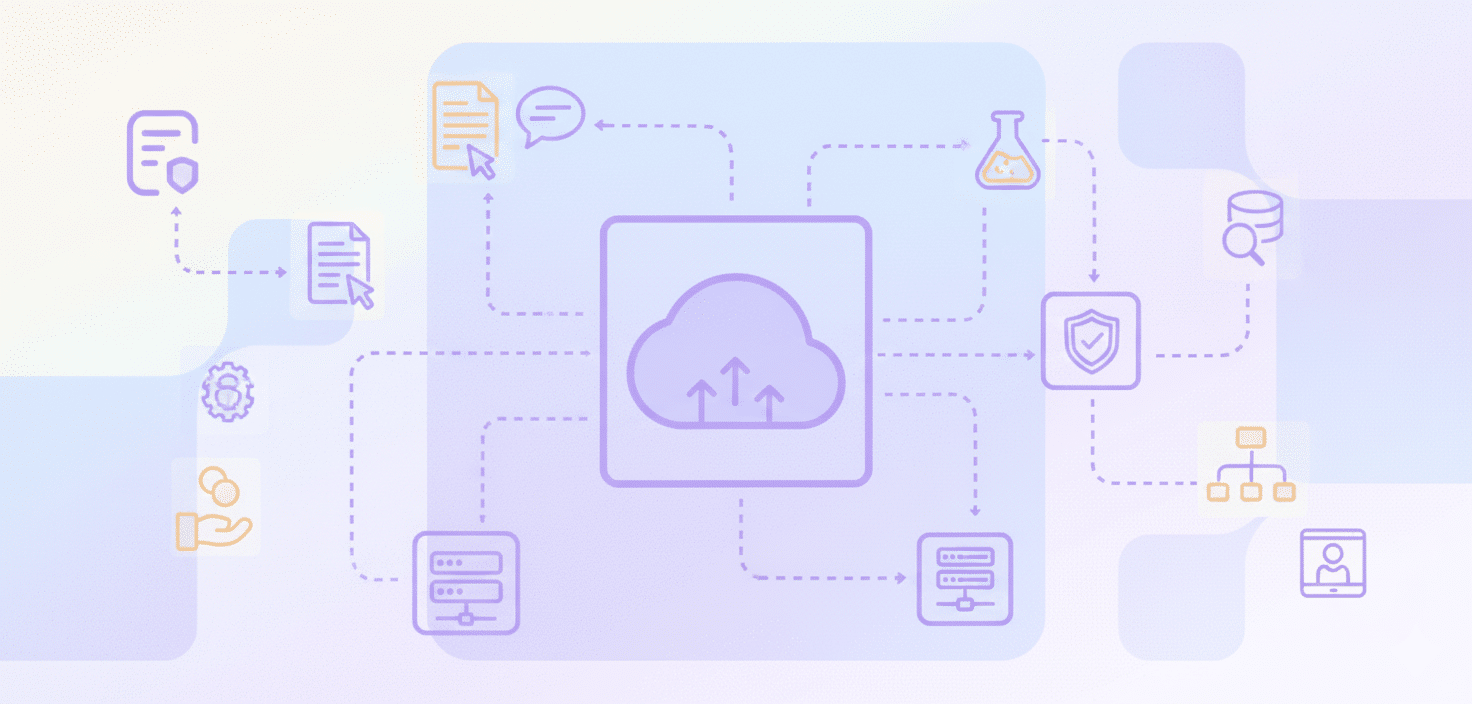市场分析
什么是XaaS(一切即服务)?

什么是XaaS(一切即服务)?
XaaS 是“一切即服务”(Everything-as-a-Service)或“任何即服务”(Anything-as-a-Service)的缩写,是一个广义术语,指通过互联网交付各种 IT 服务、应用程序和资源。
这是一个涵盖了各种“即服务”模式的总称,例如:
- SaaS(软件即服务)
- PaaS(平台即服务)
- IaaS(基础设施即服务)
这些模式中的每一种都服务于技术栈中一个独特的层。
XaaS 作为云计算的一部分,提供了一种可扩展的、按需的服务访问方式,从而能够实现从基于产品的解决方案到基于服务的解决方案的转变。
像 IBM、Amazon Web Services(AWS)、Google Cloud 或 Microsoft Azzure 这样的公司提供 XaaS 服务,巩固了它们在IT行业中的地位。
XaaS有哪些优势?
XaaS 会以多种方式影响业务运营和创新工作。
主要优势包括:
- 资源管理:XaaS 通过将所有必要的工具和服务整合到一项订阅中,简化了 IT 部署,从而降低了复杂性。
- 更快的生产和协作:可用的云工具改进了生产流程和团队协作。
- 可扩展性:XaaS 可轻松适应不断变化的工作负载和业务需求。
- 易用性和敏捷性:实现快速部署、频繁更新以及对组织系统进行更快修改。
- 增强安全性:先进的云基础设施可提高数据保护水平。
- 成本节约:在提高运营效率的同时,降低资本支出。
- 客户满意度和创新:释放资源用于创新,并培养更好的客户体验。
- 收入机会:创造新的收入来源,降低客户的进入成本,以及建立更丰富的客户关系。
但SaaS公司也应该考虑:
- 对供应商在安全性和可靠性方面的依赖。
- 供应商锁定,这可能在退出策略未充分制定时发生。
在实施任何XaaS模式之前,都需要一个清晰的部署计划。
XaaS 与传统 IT 有何不同?
以下是XaaS与传统IT之间的区别:
|
方面 |
XaaS (一切即服务) |
传统IT |
|
服务交付 |
通过云端以数字方式提供IT服务。 |
依赖物理基础设施和本地部署资源。 |
|
支付模式 |
采用 按需付费 方法,提供运营灵活性。 |
基于 资本支出 (CapEx),需要前期投资。 |
|
灵活性 |
提供 按需、可扩展的解决方案 无需大量硬件或软件投资。 |
可扩展性有限;需要大量时间和成本来扩展容量。 |
|
业务重点 |
将功能转化为 服务,侧重于客户成果和持续的价值交付。 |
专注于 产品和所有权,强调资产管理。 |
|
对运营的影响 |
提高了在……方面的灵活性 定价、生产和交付,从而更快适应市场变化。 |
由于物理依赖性,定价和部署结构更为僵化。 |
然而,向 XaaS 转型需要员工适应和培训,以保持生产力并充分利用该模式的优势。
XaaS 如何使不同规模的企业受益?
XaaS可以影响不同规模的企业,可能对成本管理、可扩展性选择和技术获取产生影响。
- 中小型企业 (SMEs):可以利用XaaS访问企业级技术,而无需高昂的前期成本。提供商负责处理更新、安全和维护。
- 初创公司: 受益于灵活的、按使用量付费的定价,实现快速扩展和资源优化。
- 大型企业: 可以简化运营,使IT基础设施现代化,并将资源重新导向创新。
采用 XaaS 面临哪些挑战?
尽管XaaS提供了变革性优势,但也带来了企业必须积极主动应对的挑战。
常见挑战包括:
- 对云和互联网连接的依赖:
- 停机或连接问题可能会扰乱运营(IBM)。
- 供应商透明度水平各不相同:对提供商的运营和 服务水平协议 可能引入风险。
- 数据安全与合规性:确保强大的网络安全并遵守法规至关重要。
- 文化和组织变革:转向XaaS需要思维转变、技能再培训和变革管理。
评估供应商锁定风险、互联网可靠性和服务连续性也同样重要,以确保稳定和可持续的 XaaS 合作关系。
健全的治理和透明的合作关系对于在 XaaS 环境中维护信任、安全和合规性至关重要。
结论
XaaS(一切即服务)是从所有权转向访问的转变,这可能会影响 SaaS 业务的创新速度、可扩展性以及对价值交付而非基础设施维护的关注。
公司必须建立安全和合规程序,在灵活性和控制之间取得平衡,并培养创新文化,才能成功实施XaaS。